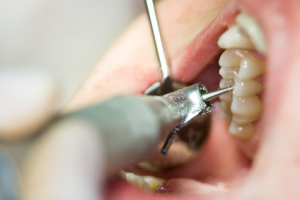Over the years there has been a lot of discussion over Amalgam vs. Resin fillings  and what is the best type of filling to place in a cavity. There have also been discussions regarding health concerns associated with the type of filling material used. What exactly is the real difference between amalgam or silver fillings and resin or white colored fillings? And, Is there one that is a healthier option for me to use?
and what is the best type of filling to place in a cavity. There have also been discussions regarding health concerns associated with the type of filling material used. What exactly is the real difference between amalgam or silver fillings and resin or white colored fillings? And, Is there one that is a healthier option for me to use?
- Aesthetically Resin is generally a more attractive restorative material. The composition of resin has been adjusted throughout the years to create a more durable and functional filling material that ha a bond to tooth structure. Allowing dentists to place smaller, more conservative fillings. However, over time some resin fillings can discolor from drinking dark, staining liquids such as coffee and tea as well as staining from smoking.
- Amalgam is a very strong and durable material. The material does not have the ability to bond to the tooth, however it forms a layer between itself and the tooth wall that aids is sealing the tooth from bacterial insult.
- Both amalgams and resins degrade over time. Amalgams tend to shrink away from the borders or margins of the tooth and there may be small fissures or cracks in the enamel surrounding where the filling once was. Resins, over time, may wear away or wear down on the biting surface. Both restorations may need to be replaced between 5-10 years depending on the person.
- Some Patients may experience temporary temperature sensitivity after placement of resin fillings. Although this can occur with silver fillings as well, there is a higher incidence of post-operative sensitivity with resin fillings.
- Public controversy has been raised about mercury in silver fillings and BPA’s in resin fillings. The ADA has deemed these claims unfounded and each filling material to be within the standard of care of dentistry.

Leave a Reply
Want to join the discussion?Feel free to contribute!